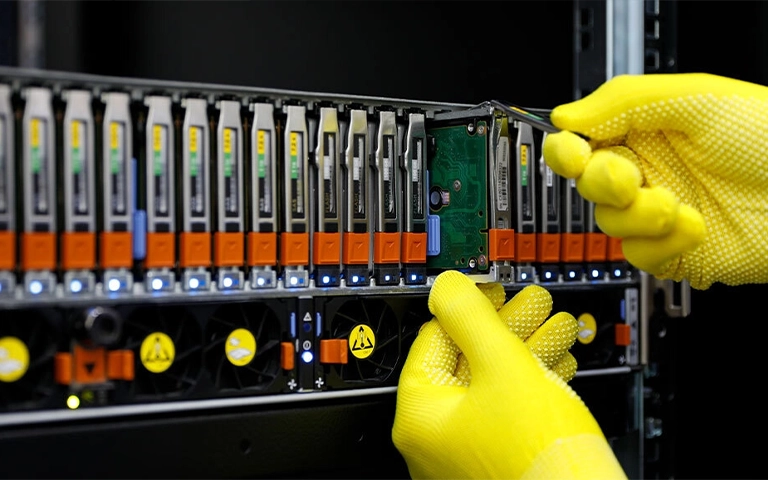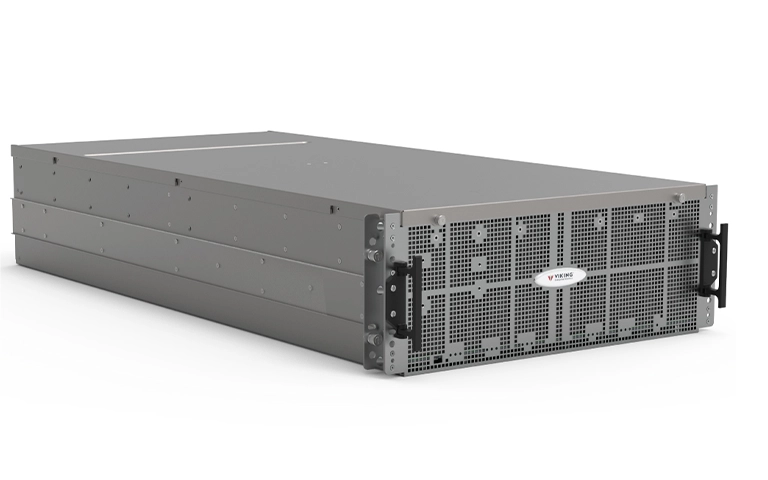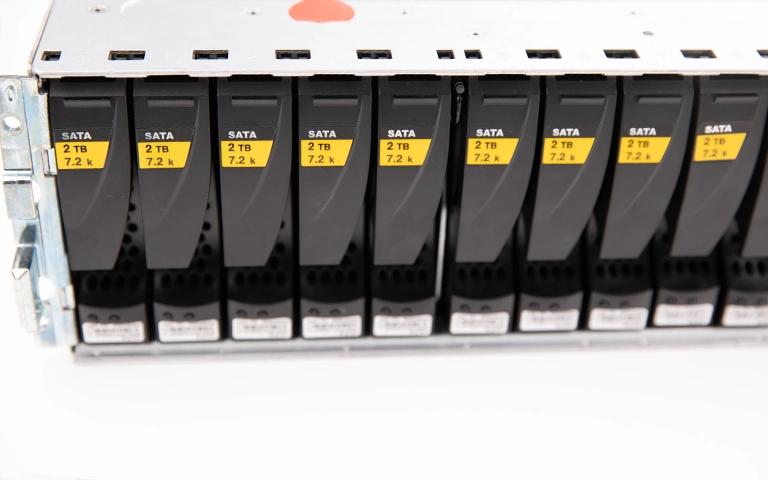When you explore storage options, you may come across the term JBOD. It stands for Just a Bunch of Disks and describes a simple way of combining multiple drives into one larger storage pool.
Unlike RAID, JBOD does not use striping or redundancy. It simply allows you to use different drives together as extra space.
This setup can be useful in some cases, but it also comes with clear risks. If one drive fails, you could lose access to all the data stored on that disk.
In this guide, you will learn what JBOD really means, how it compares with RAID, and where it makes sense to use it. We will also look at its advantages, disadvantages, and what steps you should take if your JBOD setup ever fails.

Understanding JBOD Storage
JBOD stands for Just a Bunch of Disks. It is a storage approach where multiple drives are combined to act as one larger logical volume. Instead of focusing on performance or redundancy, JBOD is mainly about maximising available space.
In a JBOD setup, data is written to one drive until it is full. After that, new data is written to the next drive in sequence. This makes it very different from RAID, where striping or mirroring is used to improve speed or protect against drive failure.
Another advantage of JBOD is that it can use drives of different sizes and brands. This makes it more flexible than RAID, which often requires identical disks. However, this flexibility comes with trade-offs that must be understood before relying on JBOD for important data.
How JBOD Differs from RAID
At first glance, JBOD might look similar to RAID since both involve multiple drives working together. In reality, they operate very differently.
Key differences include:
Data Distribution: JBOD fills one drive at a time, while RAID stripes or mirrors data across drives.
Redundancy: JBOD offers no protection if a drive fails. RAID can provide redundancy, depending on the level.
Performance: RAID can improve read and write speeds. JBOD keeps the same speed as the individual drives.
Drive Requirements: JBOD accepts mixed drive sizes. RAID often requires matching drives for best results.
Risk Factor: In JBOD, a single drive failure only affects data on that drive. In RAID, parity or mirroring can keep data safe.
These differences show that JBOD is more about convenience, while RAID is focused on performance and protection.

Advantages of JBOD
JBOD is popular in certain situations because it provides flexibility and simplicity. While it does not offer the performance or redundancy of RAID, it has some benefits worth noting.
Main advantages include:
Full Use of Space: You can combine drives of different sizes without losing capacity.
Flexibility: Any available drives can be added to extend storage.
Simplicity: JBOD is easy to configure compared with complex RAID arrays.
Low Cost: It does not require identical drives or advanced hardware.
These points make JBOD useful for expanding storage quickly, but the trade-offs become clear when you look at its limitations.
Fast turnaround times for business-critical data
Limitations and Risks of JBOD
While JBOD is simple and flexible, it comes with serious drawbacks. These risks often outweigh the benefits, especially if you are storing valuable data.
Key limitations include:
No Redundancy: If a drive fails, the data on it is lost with no backup.
Inconsistent Performance: JBOD does not improve speed, unlike RAID setups.
Drive Dependency: Each disk holds unique data, making recovery more complex.
Higher Data Loss Risk: The more drives you add, the greater the chance one will fail.
Because of these risks, JBOD is not a good choice for critical systems where data safety is essential.

When to Use JBOD and When to Avoid It
JBOD can work well in some setups, but it is not suitable for every situation. Knowing when to use it and when to avoid it will help you choose the right storage solution.
Best times to use JBOD:
When you need extra space without complex setup
For temporary or non-critical storage needs
When mixing different drive sizes for maximum capacity
Times to avoid JBOD:
For business-critical or sensitive data storage
In environments where uptime and reliability are essential
When performance improvements are a priority
If you decide to use JBOD, be aware of the risks and always have a backup strategy. If it fails, recovery is more complex, which leads to the next point.
What to Do If Your JBOD Fails
When a JBOD setup fails, the results can be serious. Each disk contains unique data, so recovery is more complicated than in RAID. Acting carefully is critical to avoid permanent loss.
If your JBOD fails:
Do not reinitialise or reformat the drives
Avoid running repair utilities without guidance
Keep the failed drives disconnected until assessed
Contact data recovery experts as soon as possible
At RAID Recovery Services, we specialise in complex storage systems, including JBOD configurations. Our engineers can evaluate your drives, create safe clones, and attempt recovery in controlled environments. This gives you the best chance of getting your files back.

Conclusion
JBOD, or Just a Bunch of Disks, is a straightforward way to combine storage drives into one volume. It offers flexibility and low cost, but it also carries major risks. Without redundancy or performance benefits, JBOD is best suited for temporary or non-critical storage.
If you rely on JBOD and a drive fails, recovery becomes challenging. Acting quickly and avoiding DIY fixes can make the difference between saving your data and losing it forever.
Need professional help with a failed JBOD system? Contact RAID Recovery Services today. Our experts are available 24/7 to guide you through safe recovery options and get your data back.
Trust the experts with proven results
Frequently Asked Questions
What does JBOD mean in storage?
JBOD stands for Just a Bunch of Disks. It describes combining multiple drives into one larger storage volume without using RAID striping or redundancy.
Is JBOD the same as RAID?
No. JBOD simply groups drives together, while RAID uses specific configurations to improve speed or add redundancy. RAID can protect against drive failure, but JBOD cannot.
Can JBOD improve performance?
JBOD does not boost speed. It writes data to one disk until full, then moves to the next. Performance stays the same as the slowest drive in the setup.
What happens if one drive in JBOD fails?
If a disk fails, all the data stored on that specific drive is lost. Unlike RAID, there is no redundancy in JBOD, so recovery is more complex.
Is JBOD good for important data?
No. JBOD is best for non-critical storage or temporary use. If you need reliable data protection, RAID or a dedicated backup solution is a safer choice.